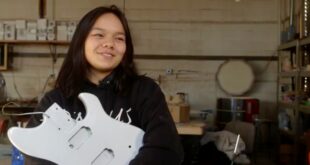I remember my first several attempts to get a blog off the ground. I hacked away at a keyboard on a library desktop for half an hour or so every day after my classes were over, then scrambling at the very last minute to throw my things together in time to catch the bus home. I thought, “If I can just tell people something they haven’t heard before, they’ll love to read this.” It seemed like every week I would have a new million-dollar plan for how I was going to get my writing off the ground. But week after week I would release a new post out into the internet, and week after week the rush of a good idea would fade into the disappointed feeling that no one was interested in what I had made.
I repeated this cycle for several years. I met others experiencing the same—local musicians and aspiring actors, photography students, and artists. Each of us shared a critical driving force in everything we made—the belief that if we could just create something amazing it would begin spreading on its own. There was a sense, though, that someone else could come along and make something that turned everyone’s attention their way instead. The angst that, because time and energy are finite, we had to make something better than everyone else was making if we would ever find the kind of success we dreamed of. Looking back, I think it was this ever-present spirit of competition that held us back more than anything.
Over the past four years, I’ve been grateful to see more of my work spread online. I believe part of that shift has been learning and growing—being able to make better things than I knew how to before. But I believe the single greatest contributor has been moving from an attitude of competition to one of collaboration.
Competitive Versus Collaboration
While it’s true that consumption of art is a major piece of how people use the internet, I’ve found that deeply-rooted engagement often stems more from some level of inclusion in the process. The explosion of access to music through apps like Spotify and Apple Music, the infinite number of impossibly skilled photography accounts to follow on Instagram, and the endless flow of new blogs reaching out to potential readers through social media, can often make the creative landscape feel intimidating. If you create things with a competitive mindset, the truth is that there are far more people with far more resources that always seem to be ahead of you.
Including people in the creative process and creating a network of support is, I believe, the meaningful way forward.
Switching between these mindsets requires us to move from an attempt to entertain or inspire to an attempt to involve. It means approaching creative work very differently. Instead of attempting to make the best thing, this approach starts with an idea and allows that idea to take shape a little more through each person that engages with it. A great example of this in the secular world is musician Leah Nobel’s album, “Running in Borrowed Shoes.” Running in Borrowed Shoes is a collection of songs based on real-life interactions the artist intentionally created with people in her community. She spent time at nursing homes and the VA. She called up fans, sat down at coffee shops with people and listened to their stories, and with their permission, began to craft her music around the stories and ideas that they shared. Rather than relying on her listeners to just enjoy her music, she created personal reasons for people to engage—dozens of connections and points of access for her potential audience.
For and With
Another great example can be found in the recent success of Kevin Wilson—an Adventist pastor and Tik Tok content creator that began making inspiring videos tying spiritual lessons to chai. While the content itself is compelling, Wilson’s constant, regular engagement with his audience through “duets,” and comment sections has created a thriving community around the content itself. This switch from for the audience to with the audience seems to be one of the greatest determining factors in whether a creative project will gain traction in a social-media-dominated creative landscape.
If you enjoyed this, you might like, Better Live Streaming Audio | Competition or Collaboration?
Kaleb Eisele writes from the Pacific Northwest.
© 2017 - 2024 ASA. All rights reserved. Click here for content usage information.



